 A person can get pretty biblical talking about olive oil, but Scripps College’s Best of Show win last month at the Los Angeles International Extra Virgin Olive Oil Competition brought to mind this particular passage from Ecclesiastes: there’s nothing new under the sun (1:9).
A person can get pretty biblical talking about olive oil, but Scripps College’s Best of Show win last month at the Los Angeles International Extra Virgin Olive Oil Competition brought to mind this particular passage from Ecclesiastes: there’s nothing new under the sun (1:9).
Founded in 1926, Scripps is one of the Claremont Colleges located in L.A. County’s Pomona Valley. This little factoid bears fruit later in this story, so pay attention. Anyway, as part of a campus-wide sustainability project, students harvested and pressed the olives from the campus’ trees, some of which are over 80 years old, and many of which had been rescued from destruction in a 1960s campus protest.
Lo and behold, Scripps pulls off a miraculous hat trick—first place in the competition, first time entering the competition, and first time the school produced oil from its trees—to stun the international olive oil community in a blind tasting, reminiscent of the Chateau Montelena Chardonnay upset at the 1976 Paris Tasting.
You think this similarity is what I meant by the Ecclesiastical reference up top? That is so 1970s. When I heard about Scripps’s sweet victory with its Pomona olives, I turned not to the book about the Paris wine kerfuffle, Judgment of Paris, but to my copy of How We Cook in Los Angeles, a lavish, hardbound community cookbook published in 1894. At the front of the book is a full-page ad for Howland’s Pure Olive Oil, produced from olives grown and pressed in–wait for it–Pomona.
Yes, back in those ‘90s, Angelenos were eating locally, dressing their salads with olive oil, possibly even Howland’s brand, “Strictly Pure and made with the Greatest Care.” You’ve got to love the prices: $1.50 a quart, 75 cents a pint.
It makes sense that the inland heat of eastern LA County produced abundant olives in the wide open 19th century (J.L. Howland had 160 acres of trees) and a limited batch of Scripps award-winning olive oil in the urbanized 21st.
I wish I could taste Howland’s oil now. I did snag a bottle of the Scripps, which set me back a lot more than a dollar, but the money goes to the school’s outreach programs, so, okay.
Appropriately bottled in dark glass to protect against light exposure-deterioration, Scripps College Olive Oil is a light golden green and has a buttery flavor with a hint of pepper. It won in the “Domestic Delicate” category.
Alas, the 2012 Scripps oil is all gone, and the college isn’t even sure if they’ll produce it again. So like a lot of things you read in the Bible, you’re just going to have to take it on faith that the oil was good.
You can read more about the Scripps project in Felicia Friesema’s LA Weekly story.
A Late 19th-Century Los Angeles Salad (compiled from several 19th-century California cookbooks)
Tear, do not cut, a variety of salad greens such as chicories, lettuces, and mâche. Rinse and gently dry on cotton towels. Store on ice until ready to serve. Place in a bowl with chopped chives and tarragon. Toss with the best olive oil, a little vinegar, salt, and pepper.

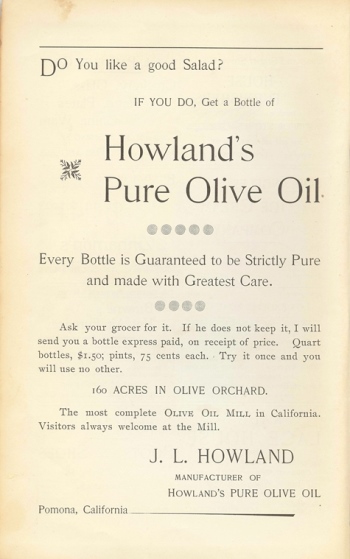

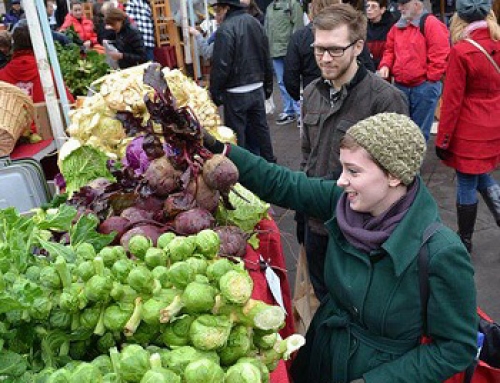
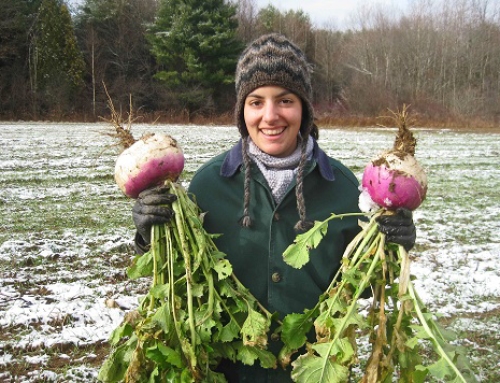
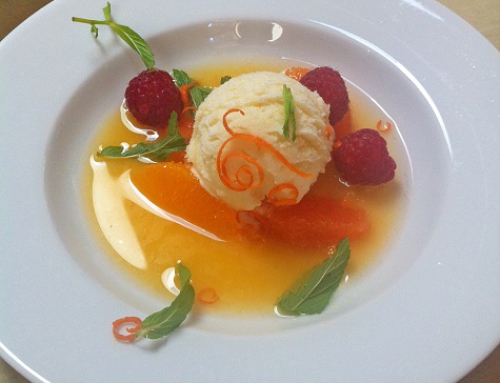

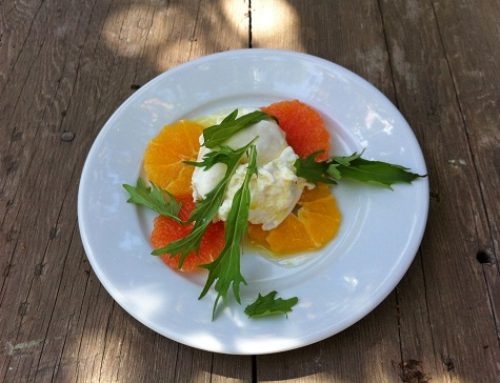
Loved the story and the Biblical references. Olive oil does make one feel connected with the past. Thanks for sharing.
Thanks for writing Patti. It is delicious indeed to peel back the present and find so many connections to the past just beneath the surface!
What a fun read! Hope to taste it someday.
Once again, Amelia, you have delighted with an informative and interesting article. I wonder whether Cal Tech entered their Olive Oil produced from trees on that campus. I hope we can get some early notice of these home-grown olive oils. Look forward always to your articles.
Thanks Fran, another culinary history buff, for writing in. Let me know what you find out about Cal Tech EVOO. Did they spin any in their giant centrifuge?
Love this! Not only did I have no idea those enterprising Scripps undergraduates were up to something good with olive oil — I had no idea there was even such a thing as the Los Angeles International Extra Virgin Olive Oil Competition.
Thank you for this interesting and delightful piece, Amelia, and for your wonderful blog!
Just think about all the great things in LA that are hidden in plain sight!
Who knew about this terrific bit of L.A. culinary history? Superbly researched story. Hope to snag a bottle next year!
Thanks, Nancy, we’ve shared a long appreciation for the importance and relevance of food history to what we cook and eat today! So glad there are culinary history groups popping up all over like our SoCal group: http://www.chscsite.org
What a beautiful story! Everything is connected…
Isn’t that the truth. And why is it that we so often forget that the past has a lot to teach us? I can’t decide if it’s because we forget we don’t have to reinvent the wheel or because of our hubris–thinking we have invented something for the first and only time. What do you think?
An additional note on the olive oil pressing on the Scripps College Campus. The Sustainability portion of the project was not only for producing the olive oil, so that olives not be wasted, but also to build community as faculty, staff, students, and some parents joined in on the wonderful harvesting of the olives as we ‘threaded’ through the branches and simply became acquainted with one another. A most cherished memory!
Thanks for writing in Scripps Grounds Director! Delighted to hear the project goeth forth in 2013. You are so right; there is tremendous “added” value in a shared, hands-on endeavor. I may be partial, but I think especially so when it comes to producing food…from the ground up (or tree down in this case). Makes everything rich with meaning and deepens the flavor.